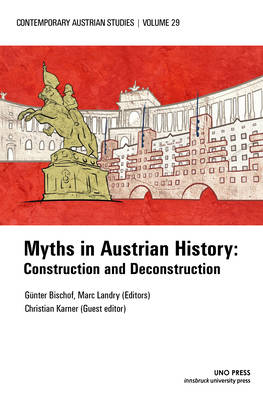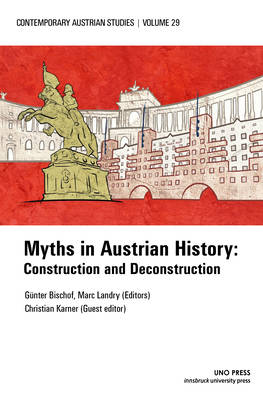
- Retrait gratuit dans votre magasin Club
- 7.000.000 titres dans notre catalogue
- Payer en toute sécurité
- Toujours un magasin près de chez vous
- Retrait gratuit dans votre magasin Club
- 7.000.0000 titres dans notre catalogue
- Payer en toute sécurité
- Toujours un magasin près de chez vous
Myths in Austrian History (Contemporary Austrian Studies, Vol. 29)
Construction and Deconstruction
Description
Austria's post-WWII 'victim-myth' both shaped the country post-war history and, since its deconstruction in the aftermath of the Waldheim affair, is now a central trope in the scholarly literature. This volume aims at extending the discussion of different myths throughout Austria's 20th century-history and some of their continuing impact on the present. We consider 'myths' to be socially, culturally and politically consequential - though always also contestable - narratives of particular pasts and their purported meanings. Such narratives are, at best, selective in what is being remembered. At worst, they contain outright distortions that are arguably particularly topical at our present historical juncture with its concerns about the 'post-factual'. Distinctly inter-disciplinary and focused on different realms of 'myth-making', this volume casts its analytical net unusually wide. The various myths critically examined here thus include: artistic representations of 'Austrian'/'German landscapes' both before and after the Anschluss; Austrian narratives surrounding World War II, the Holocaust and the much-discussed Stunde Null; re-construction and the Marshall Plan; neutrality; the trope of post-war Austria as an Insel der Seligen; collective self-portrayals as an Umweltvorzeigeland; Viennese narratives about the city's Jewish history; Mitteleuropa-Nostalgie and its (transnational) manifestations in policy-making. Importantly, this volume offers different critical responses to such myths, searching assessments about their political impact or usefulness, and thought-provoking discussions of the role and responsibilities of scholarship vis-a-vis such highly selective or positively distorting narratives.
Spécifications
Parties prenantes
- Editeur:
Contenu
- Nombre de pages :
- 300
- Langue:
- Anglais
- Collection :
Caractéristiques
- EAN:
- 9781608011889
- Date de parution :
- 27-08-20
- Format:
- Livre broché
- Format numérique:
- Trade paperback (VS)
- Dimensions :
- 145 mm x 218 mm
- Poids :
- 566 g

Les avis
Nous publions uniquement les avis qui respectent les conditions requises. Consultez nos conditions pour les avis.





